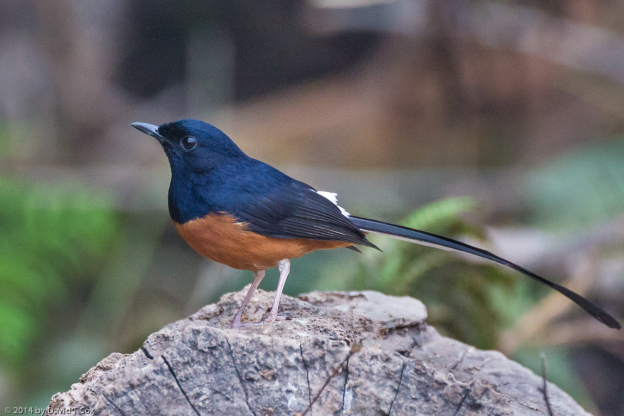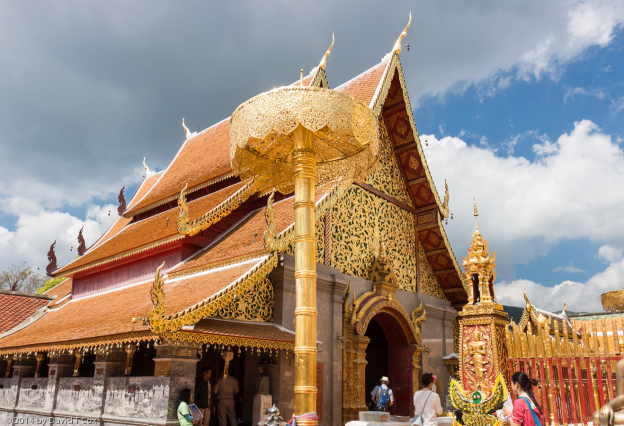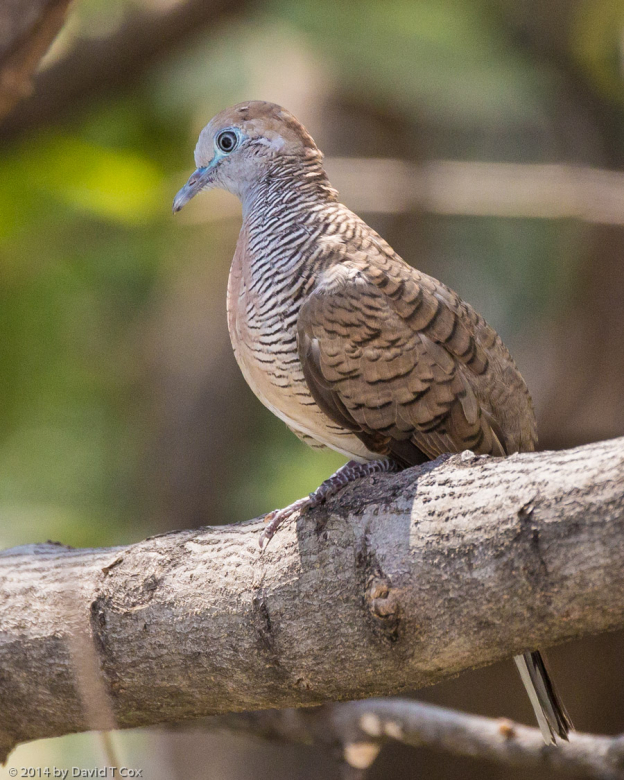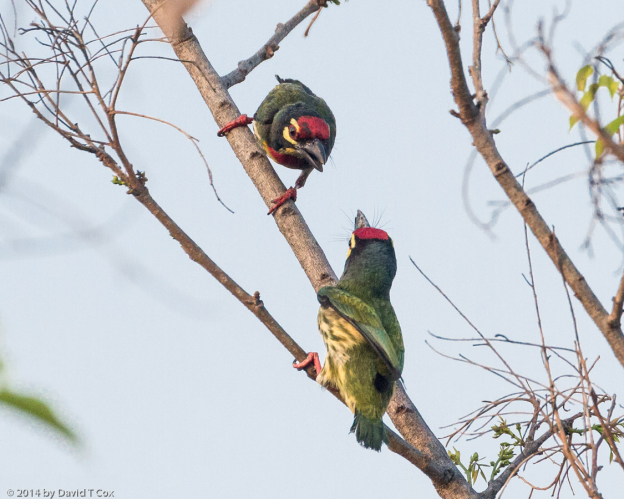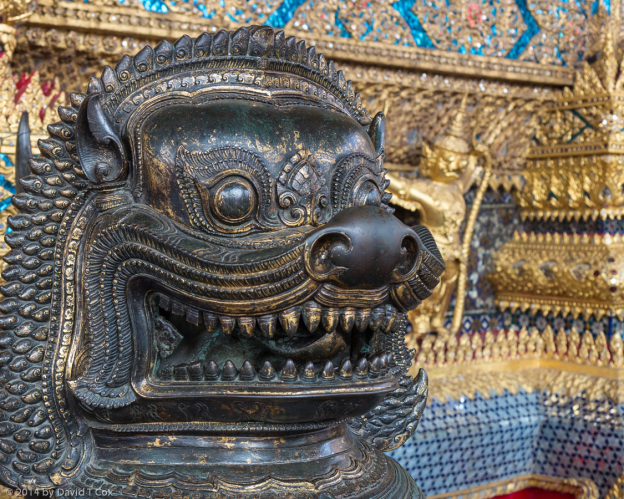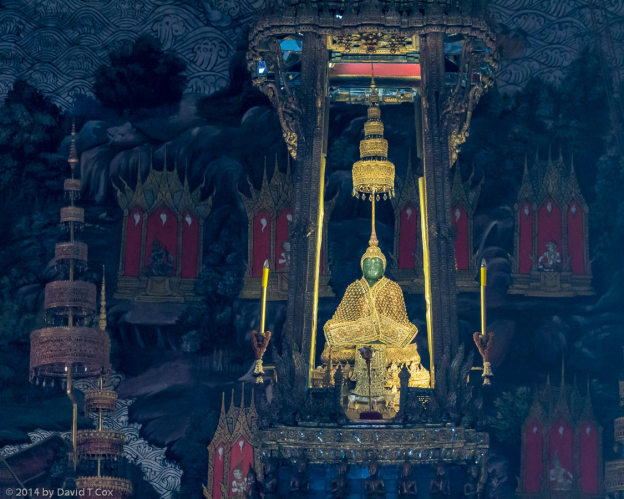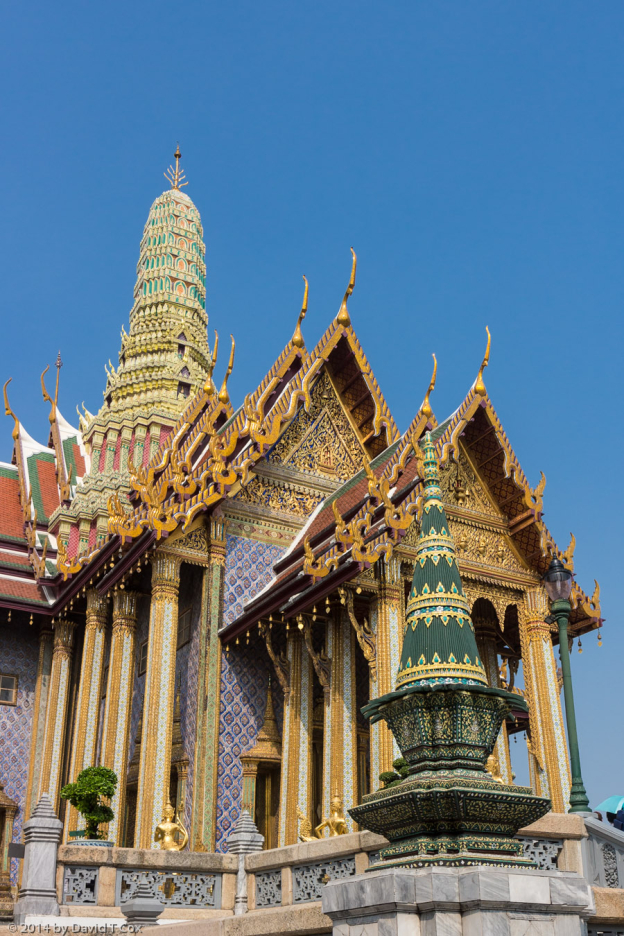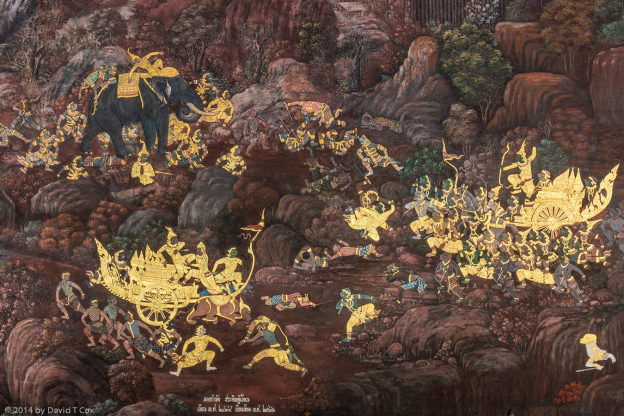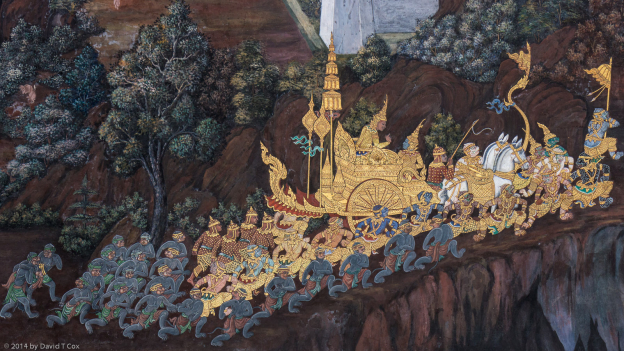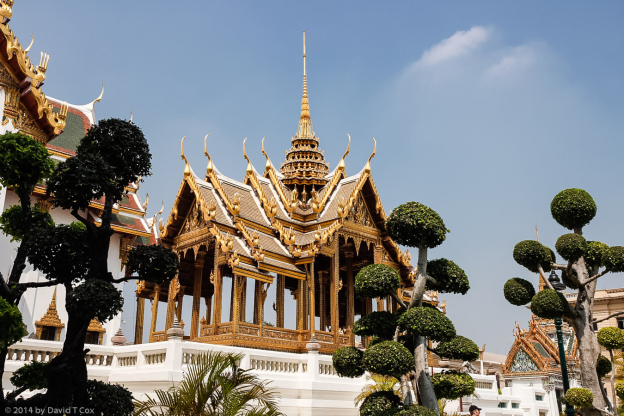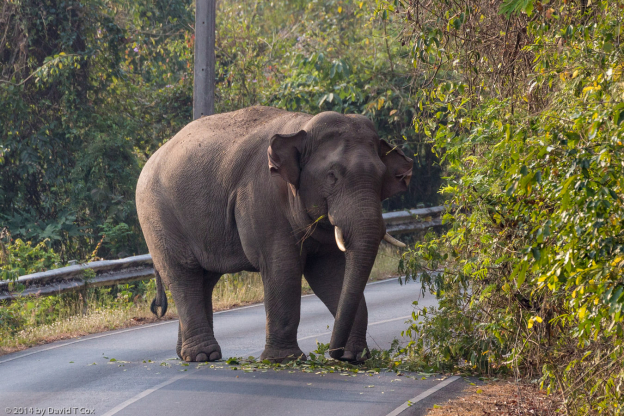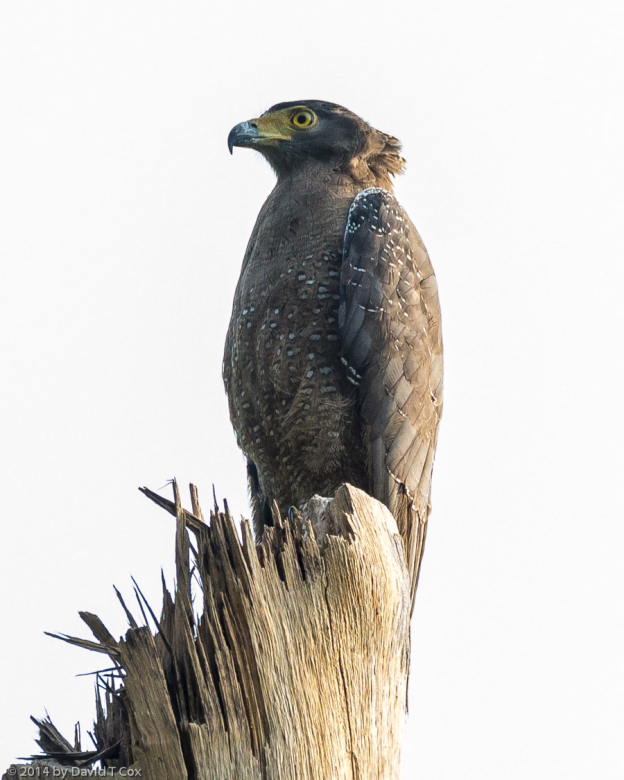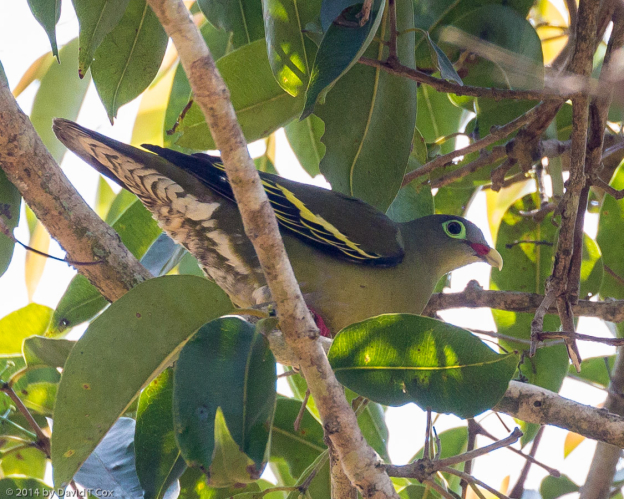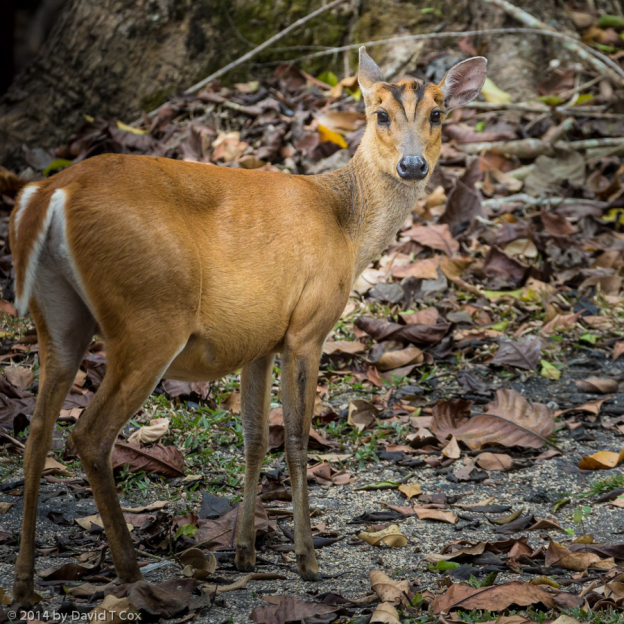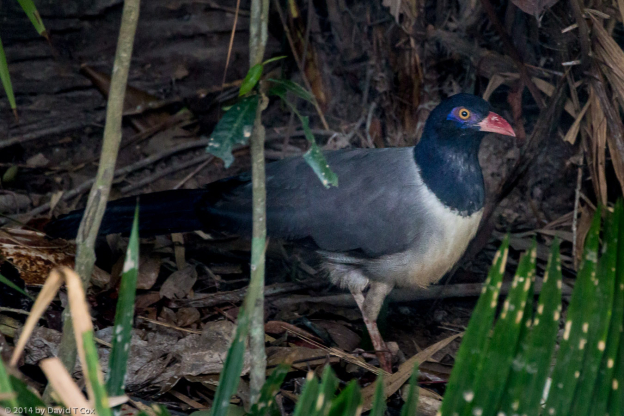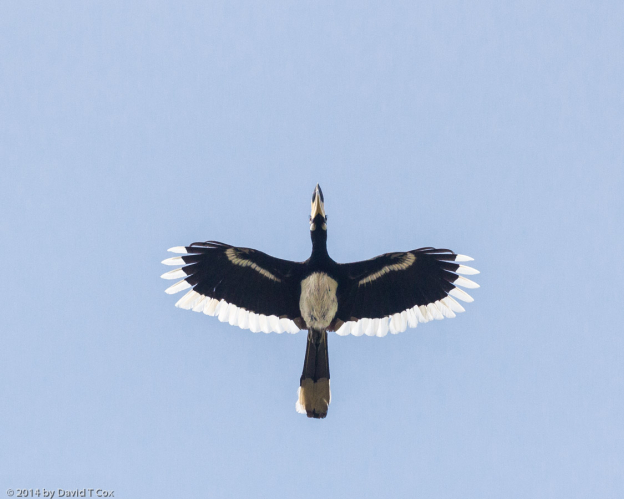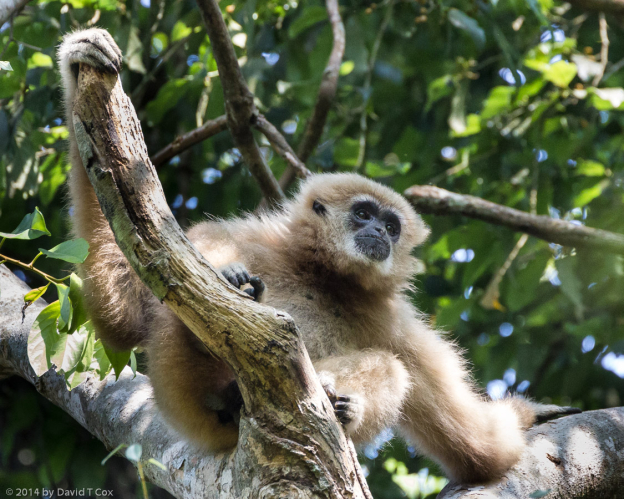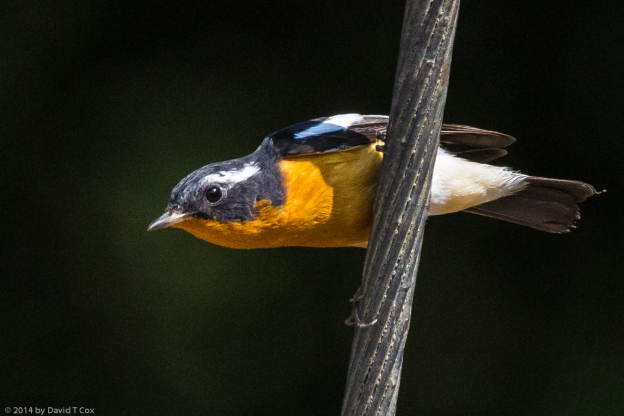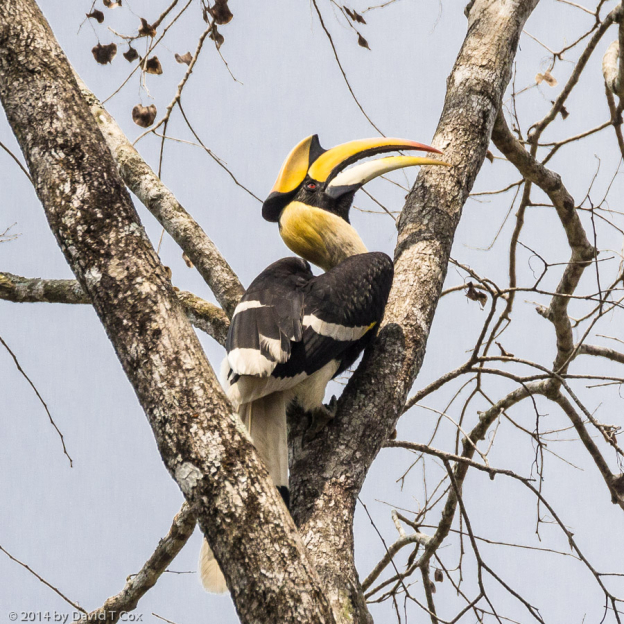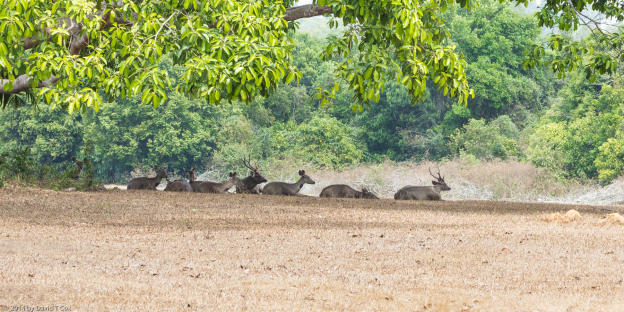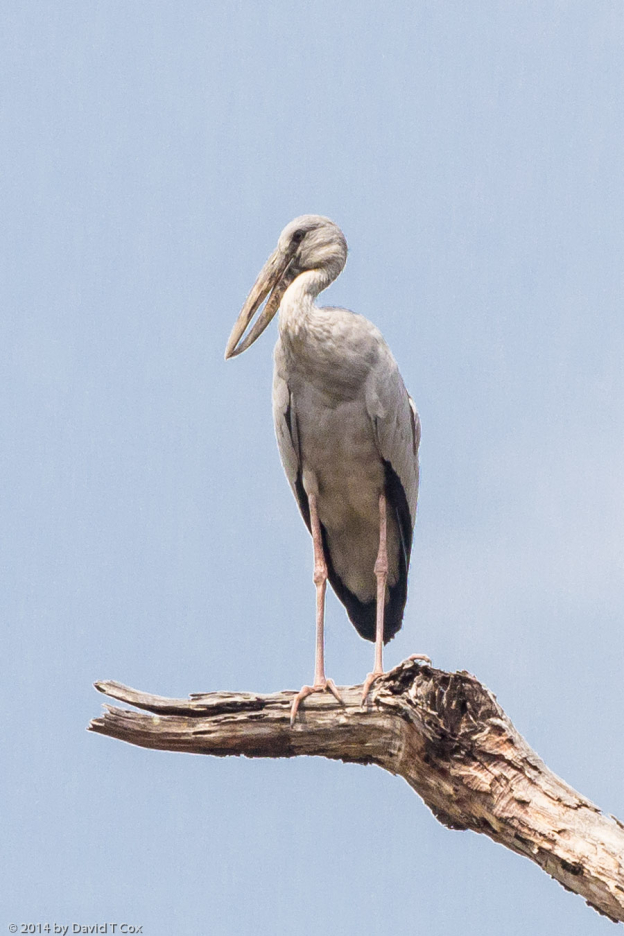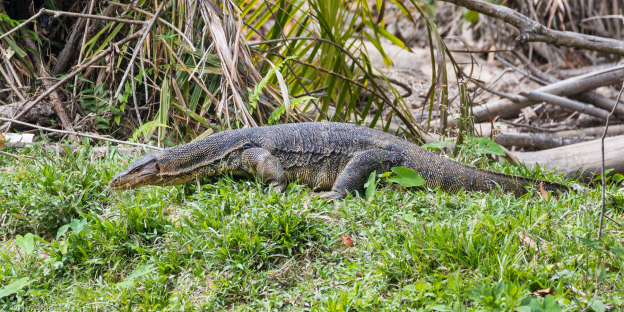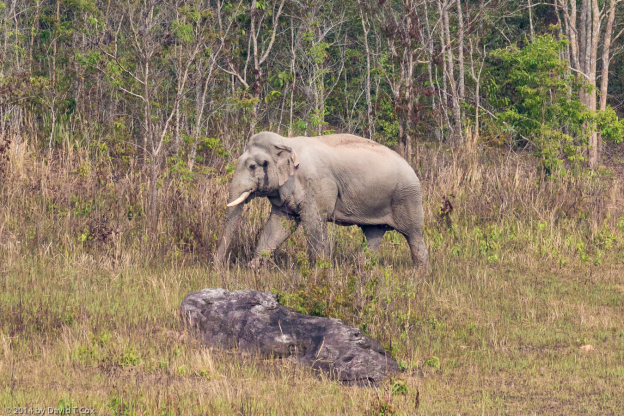All Photos Are Below the Travelogue Text
Click on Any Photo To Open Slide Show
To print the travelogue, right click anywhere on the page. Choose "Print" from your browser dialog box. You can choose Save to PDF in the browser print window.
Share your thoughts.
Email Dave - coxdavid55@hotmail.com
Hello all. I last wrote from Chiang Mai where I had fun doing local birding with my high school classmate from India, David Bosch. David and his wife Leslie threw a dinner party for friends, inviting me, at a fine Italian restaurant their last day before they moved back to Oman. It was great fun; I am sorry I could not have arrived earlier, or David stayed longer, in Chiang Mai as we had a wonderful time together. After his departure I continued trying to make arrangements to visit Doi Inthanon National Park, but finally gave up after both being unsuccessful at arranging to hire local mountain tribal guides, and being quoted very expensive arrangements to hire private car and driver for two nights (I found it is not recommended to self drive a rental car without an international drivers license). I did hire car and driver to visit the Wat Doi Suthep atop the mountain to the west of Chiang Mai, doing birding along the way. The Wat is very holy among Buddhists, a 14th century site founded where a sacred relic was carried by the King’s white elephant, which supposedly climbed the mountain, trumpeted and turned around 3 times, then lay down and died, indicating the spot for the holy shrine to house the relic.
I had hoped to travel by train (sleeper car) from Chiang Mai to Bangkok, but found everything was booked for more than a week in advance, so finally just flew (no problems with last minute flights). In Bangkok I elected to stay in the Banglamphu district, which lies in the crook of the Chao Phraya River, on the “island” which was the Thai capital from the 18th century on, and is the most popular area for tourists as it is close to all major sites of interest. Bangkok really has no central district or “downtown”, and is a very traffic congested city. Walking is much easier than in downtown Phnom Penh, but is hot, and taxis are cheap. I stayed first in the New Siam Riverside Hotel (reasonably nice) but moved the next day to the New Siam II; same owners, almost same rooms, half the price. Both hotel’s staff, and waiters at the tourist restaurants which were densely packed in the area, seemed harried and often slightly rude to customers – recalling to me memories of Panama’s unpleasantness, but with a different feel. I certainly was not charmed by Bangkok, nor made to feel welcome. Very different than Chiang Mai (and very different than Pak Chong, where I currently am housed). In both hotels I requested and got a top floor room with balcony which looked out into the tops of giant trees full of interesting birds. I got several nice bird photos from my rooms, including the Black-naped Oriole, Peaceful Dove, White-throated Fantail and two seriously battling Coppersmith Barbets.
I spent one day visiting the Grand Palace and Royal Wat Phra Kaeo – both with spectacular gold painted shrines and statuary. The Wat is most holy with the famous “Emerald Buddha”, a two foot high Buddha carved from jade (sadly not emerald), which was discovered in the 15th century when lightning cracked open a burial vault in northern Thailand, and reputedly originally was made by the Gods in India. After a trip to Laos for years, it was recaptured and brought to Bangkok by the King in 1779, and now sits on a 30 foot pillar in the major hall in the Wat. The statue wears “clothing”, which three times a year is changed by the King in a ceremony. Photos are not permitted inside, but interestingly, an open window in the front permits a view of the Buddha from outside, where people gather to try to take pictures at a distance (I used my “birding” lens to capture the image included below).
Around the interior perimeter of the Wat is a gallery with the walls covered with paintings of the scenes from the Ramayana (as with the Royal Wat in Phnom Penh, and with the bas relief images at Angkor Wat); these painting are extremely fine in detail, and are periodically retouched, so always look new. All deities are painted in gold.
I was not in the mood for more time in Bangkok, so decided to head to Pak Chong, a little town with only one enticing feature; it sits just 30 kilometers from the interior of the Khao Yai National Park, which is the premier park in Thailand for large animals, as well as a huge number of rare birds (it was the first Thai Park, and is a World Heritage Site). I bought a train ticket on Sunday, the day before I traveled, having visited the train station to see how easy it would be to navigate by train (very easy). Monday I barely made it to the train station. The first three taxis I tried to take from the hotel refused service. I could not understand why. The fourth took me, and we quickly were tied up in horrendous traffic, which all was being funneled the wrong way. My driver went around a barricade after seeing several motorcycles doing same, and within blocks we came to a complete barricading of the street – dead-ending us at a major cross street which was filled with overturned cars and barricades and ashes from fires, but no people. Apparently a major protest had been routed the night before. The taxi was stuck, and kindly hailed a motorcyclist for me (and did not charge me for the time on the meter). From there, holding my large bag between me and the driver, and with my day-pack on my back, we went over the sidewalk, through the barricades and down the now deserted street full of overturned cars, through a number of alleys, and finally back onto regular streets and timely to the train station.
I love travel by train. Too few countries still have good rail systems – I enjoy Morocco and Spain in part because of the ease of rail travel. The final approach to Pak Chong was a climb into the foothills with wild broadleaf forest all around us. Pak Chong is a hot, steamy commercial town, with no tourist infrastructure inside the town (resorts which cater mostly to weekenders from Bangkok are dense on the road between the town and the Park). I found the one recommended hotel, the Rim Tarn Inn, which is very nice with large rooms, wood floors, AC, fridge, flat-screen TV, good Wi-Fi, and all the amenities for a very decent price, and none of the rushed rudeness of the capital.
Khao Yai National Park, just south of town, covers a system of low mountains, rising at their highest to 4,400 feet; at lower elevations the trees are deciduous with huge clumps of giant bamboo – above 2,000 feet the forest is much denser with evergreen trees, many pushing the canopy to well over 120 feet. The park is a famous refuge for wild Asian elephants, gaur (giant buffalo), endangered dholes (wild Asian red dogs), sambar (elk-like giant swamp deer), muntjac (aka barking deer), tiger, Asian black bear, pig-tailed macaques and two species of gibbons, as well as a number of smaller mammals. It has over 300 species of birds, many very rare, and is the best place in Asia for hornbills, with 4 different species. I am spending a week here.
I had phoned ahead from Bangkok and arranged a guide in Pak Chong for visiting the Park. As I arrived a day earlier than originally planned, my guide was tied up my first day, but got me one of his drivers to transport me for the day into the Park. A few kilometers inside the Park the road was blocked by a massive bull elephant tearing down tree branches. We waited for maybe 10 minutes before the elephant decided to amble on down the road past us, which seemed to terrify my driver, who sped around him. I later found out, from an elephant photographer who has lived by the park for the last 23 years, that this particular elephant, to which he gave the name “Dinglu” (he recognized the elephant from my pictures), was known to occasionally walk over and straddle stopped cars, severely damaging them, although he apparently had never hurt people. I was able to photograph several new bird species, including the very hard-to-see Thick-billed Green Pigeon, as well as a number of mammals, including sambar, muntjac and pig-tailed macaques. Yesterday my guide, Jay, picked me up at 6 and we spent over 10 hours in the Park. I was able to photograph almost 30 species of birds – 10 new species for me – including the extremely rare Coral-billed Ground Cuckoo, the magnificent Great Hornbill and the flashing little Mugimaki Flycatcher.
One often can hear the high-pitched hooting and trilling of the White-handed Gibbons, but the sound carries far in the mountains, and sighting them is difficult. About mid-day we were starting a short trek into the woods, when we were interrupted by Gibbon hoots not too far from the road. We worked our way a few hundred meters into the dense forest to a small stream, and in the high trees on the other side was a small family of Gibbons, two pale and two dark adults and a youngster. They were feeding on fruits and slowly making their way across the stream and back the way we had come. It was simply amazing to watch them move through the branches; these are the primates that move like the mythical Tarzan. They do giant swings with their forearms through the branches, and even greater swings up and down using vines. As I moved through the forest, a large adult often would stop overhead, and I had several good opportunities for relatively close photography. We did not hear the much rarer Pileated Gibbons, but will make a concerted effort to find them on Friday.
During the day we spotted 3 of the four species of hornbills, including the very rarely seen Brown Hornbill; sadly I was not able to get any decent photos of the Brown, but did of the Great Hornbill, and one overhead shot of the Oriental Pied Hornbill. At a river near the campgrounds we spotted a fully grown Water Monitor Lizard – about 6 feet long – slowly swimming down stream. At one juncture it went into a dead-end river branch, and I waited on the other side to get a photo when it had to climb over a low embankment back to the stream. At the end of the day we got to see a second bull elephant briefly emerge from the dense woods across a grassy opening.
I intend to spend a few more days here, and then travel to Ayuthaya, the ancient capital of Thailand. Later. Dave
To print the travelogue, right click anywhere on the page. Choose "Print" from your browser dialog box. You can choose Save to PDF in the browser print window.
Share your thoughts.
Email Dave - coxdavid55@hotmail.com
